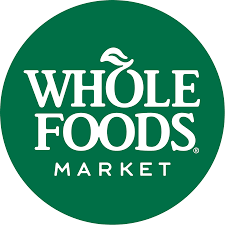If you are someone who values smart shopping and cost efficiency, then this article is for you.
Drawing from my personal experiences and trusted sources such as The Wall Street Journal, Forbes, Bloomberg, and Walmart Inc., I have written this piece to shine a spotlight on the popular American brand that has become a retail powerhouse: Walmart.
Walmart, founded by Sam Walton, first opened its doors on July 2, 1962, in Rogers, Arkansas. Walton envisioned a store where low prices would be paired with exceptional customer service, ensuring quality products were accessible to all. His mission was simple yet impactful:
“Save people money so they can live better.”
As a Service Freak, I personally always prioritize quality over cost saving.
In 2013, while on a trip to the United States, I visited Walmart in Miami Coral Wy, and I was truly impressed by the outstanding and welcoming service of the staff. Every experience I had at Walmart in the United States has been overwhelmingly positive. Not only did I save a significant amount of money, but I also had the opportunity to purchase fresh high-quality fruits and vegetables, including varieties rarely found in Europe, all while enjoying, most importantly, an amazing level of customer service that reflected the best of the American culture, an experience I have gladly shared with others around the world.

The Story of Walmart
Sam Walton started his career managing a variety store and quickly realized the potential of discount retail. His core belief was that he could create a successful business model by keeping prices low and selling in volume. This philosophy became the foundation of Walmart, and the company grew rapidly by expanding across the United States during the 1970s and 1980s
Walmart’s innovative supply chain and distribution strategy helped it become a retail giant. The company invested in technology, including a sophisticated inventory and logistics system, which allowed it to keep prices low while maintaining a vast stock of goods.
By 1991, Walmart became the largest retailer in the U.S., and it began expanding internationally soon after.
How Does Walmart Make Money While Selling Cheap?
Walmart makes its profit through a combination of high sales volume, cost-efficient operations, and aggressive pricing strategies:
High Volume: Walmart focuses on selling a vast quantity of products, compensating for lower margins by moving more goods.
Economies of Scale: Due to its size, Walmart can negotiate lower prices from suppliers and streamline operations, which helps it pass on savings to customers.
Efficient Supply Chain: Walmart uses advanced inventory management systems and has its own distribution centers, reducing costs related to storage and shipping.
Private Labels: Walmart has its own brands, such as Great Value and Equate, which provide higher margins compared to national brands.
Diversified Revenue Streams: In addition to retail, Walmart makes money from various services such as financial products, e-commerce, and partnerships with third-party sellers on its website.
As of 2024, Walmart operates over 10,500 stores in 24 countries under different banners, including Walmart, Sam’s Club, and international brands. In the U.S. alone, there are more than 4,700 Walmart stores, making it the largest retailer in the country.
Profit And Sale Strategies

Walmart is a highly profitable company, with revenues exceeding $611 billion in 2023. Despite its low-cost business model, its massive scale allows for significant profits, reporting a net income of around $11 billion for that year. Its focus on innovation, e-commerce growth, and improving operational efficiencies keeps it at the top of the retail industry.
Walmart has proven smart strategies driving profitable business. The brand frequently offers special promotions and discounts throughout the year. Some of the most notable periods for major deals include:
Weekly and Seasonal Sales: Walmart runs weekly specials, often featuring significant discounts on various products, especially in categories like groceries, electronics, and household items.
Holiday and Event Sales: Major sales happen during key retail events such as Black Friday, Cyber Monday, and back-to-school season, offering deep discounts on a wide range of products.
Clearance and Rollbacks: Walmart often promotes “rollback” prices, which are temporary price reductions, as well as clearance sales on items that are being phased out or seasonal stock that needs to be cleared.
Special Shopping Events: Walmart occasionally holds flash sales or online events, particularly during its Walmart+ Days, a special savings event for Walmart+ members.
The great thing is that Walmart customers can expect regular promotions and competitive pricing throughout the year, with even larger discounts during these key shopping periods.
Interesting Facts About Walmart

World’s Largest Retailer: Walmart is the largest company in the world by revenue and the biggest private employer, with over 2.1 million employees globally.
E-Commerce Growth: Walmart is focusing heavily on expanding its online presence, competing with giants like Amazon. Its e-commerce revenue was over $100 billion in 2023.
Environmental Commitment: Walmart has committed to reaching 100% renewable energy in its global operations by 2035 and achieving zero emissions by 2040.
Family-Owned Business: Despite being a public company, the Walton family controls over 50% of Walmart’s shares, making them some of the richest people in the world.
Supercenter Model: Walmart popularized the Supercenter model, combining grocery and general merchandise in one location, giving it a competitive advantage over traditional grocery stores.
Better Price: Walmart’s prices are generally lower due to its ability to leverage scale, negotiate favorable deals with suppliers, and maintain efficient operations.
Here are some examples comparing Walmart’s pricing versus other supermarkets for everyday items in the United States:
- Milk (Gallon):
- Walmart: Around $3.00
- Kroger: Around $3.29
- Whole Foods: Around $3.99
- Eggs (Dozen):
- Walmart: Around $2.50
- Target: Around $3.00
- Publix: Around $3.49
- Bananas (Per Pound):
- Walmart: Around $0.58
- Safeway: Around $0.69
- Whole Foods: Around $0.79
- Ground Beef (1 lb, 80% Lean):
- Walmart: Around $5.00
- Kroger: Around $5.49
- Publix: Around $5.99
- Laundry Detergent (Tide, 100 oz):
- Walmart: Around $12.97
- Target: Around $13.99
- CVS: Around $14.49
Sources: Company websites.
Notes: Prices may vary by location and fluctuate over time due to market conditions)
Walmart’s journey from a single store in Arkansas to a global retail powerhouse. What a remarkable business story.
By focusing on low prices, high volume, friendly service, and efficient operations, Walmart has managed to dominate the retail space while consistently remaining profitable. Its ability to adapt and innovate, especially in areas like e-commerce and sustainability, ensures that it continues to play a significant role in the global economy.
Start earning through your knowledge of brands. Share your insights about your experiences. Your knowledge is valuable get recognized for it!
Start the conversation leave a comment or register and Join Jestafreak today, complete Your Lifestyle Profile, and unlock your full consumer potential! Discover a world of brands and seize opportunities to make your voice heard.
Visit Jestafreak.com to explore in-depth insights into consumer behavior, brand histories, and much more.
Engage directly with our community in the Jester’s Court, or amplify your influence by becoming an Angel Customer by completing your private personal lifestyle profile.














